Repotting is an essential step if you want to grow and keep a healthy plant. Indeed, after a while perennials such as bushes in pots have exhausted all nutrients contained in their substrate. Sometimes roots also become cramped, preventing proper development. Discover our guide to successful repotting and how to keep attractive potted plants.
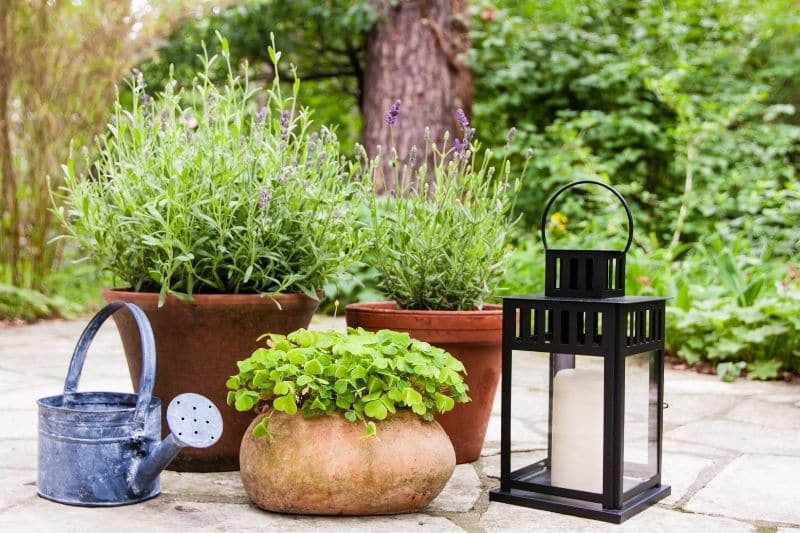
Why repot a plant?
- Whether an indoor or outdoor plant, a plant in a pot has less space than in open ground. Its root system will become cramped after a while. It will then stop developing. Your plant will therefore need more space to continue to grow.
- After a few months your plant will have absorbed all nutrients from its substrate. Some foliage and flowering plants will start to pale, stop flowering and stop growing and will clearly sulk. They then need fresh substrate to regain strength, vigour and to show off their best leaves.
- Repotting is also an easy way to divide plants, notably by separating suckers from the mother plant.
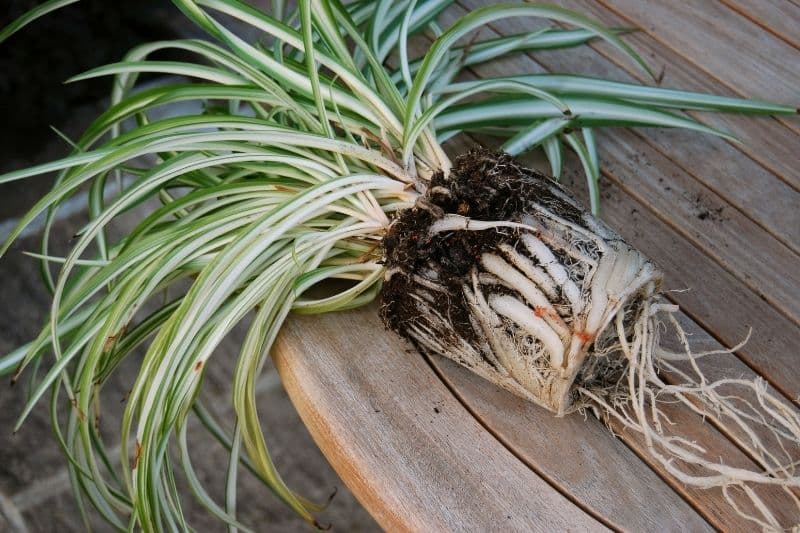
When to repot plants?
The best time to repot is at the start of spring, when your plant comes out of its dormant period. It is the season when it will be most vigorous to recover from stress caused by this change.
Ideally, repot every two years.
For plants you have just bought, repotting is generally done straight after purchase.
Which pot diameter to choose?
The pot diameter should be slightly larger than the current one. For example, for an Azalea in a 30 cm pot, give it a new container of 40 cm diameter. Choosing a much wider and taller pot can be risky for the plant's recovery. Indeed, the bigger the pot, the more space of substrate without roots and the greater the risk of rot due to watering.
Always choose a container with drainage holes to evacuate water.
How to repot a plant correctly?
1- Remove plant from pot:
- Lay plant with its pot on its side;
- Cut any roots that may be protruding from the drainage hole with pruning shears;
- Grasp the foliage at its base with one hand. With the other hand tap the pot firmly to help detach the roots. Then gently pull the pot off.
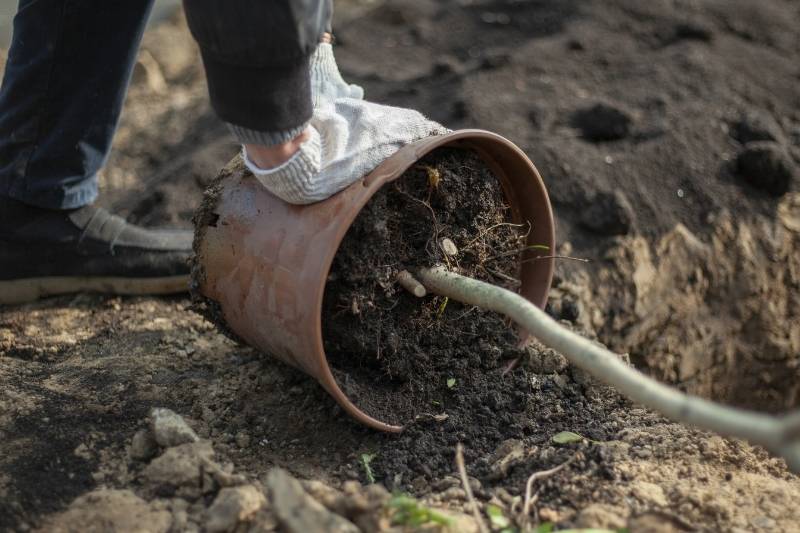
- Soak the root ball in a basin of non-calcareous water, such as rainwater, to moisten the soil. Ensure water is at room temperature to avoid additional thermal stress to the roots.
Tips:
- A slightly moist, even dry root ball takes up less volume and is easier to remove than a waterlogged one. The weight of the soil will also be lighter and you will spare your back, especially with large bushes or specimens.
- If your plant stubbornly refuses to leave its residence, use stronger methods. Lay the container on its side. If the pot is terracotta or ceramic: break it with a mallet (don protective equipment). If the pot is plastic: some gardeners do not hesitate to strike the bucket with a spade to break it (gardening helps you relax and vent!). You can also cut it with a cutter or with pruning shears, taking care not to damage roots too much.
2- Prepare the new pot:
- Place a layer of clay balls or gravel at the bottom of the pot;

- Pour in some substrate suitable for your plant. Note that there are different potting composts, for succulents, cacti or perennials. Choosing the right compost is therefore very important to ensure plant recovery;
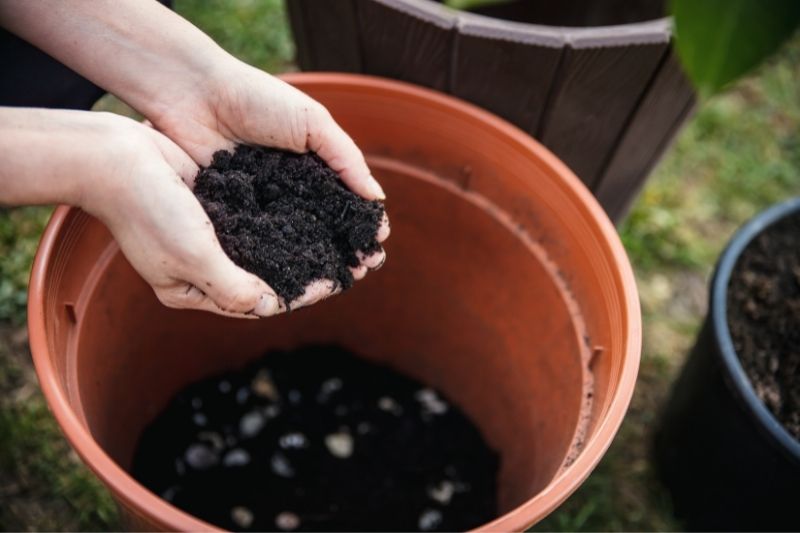
- Moisten it with rainwater using a sprayer or a watering can.
Tips: Some gardeners soak a terracotta pot in water for 1 hour before repotting during hot weather.
3- Prepare and repot your plant
- With your hands gently tease out the roots of the root ball, especially in case of a root-bound mass;
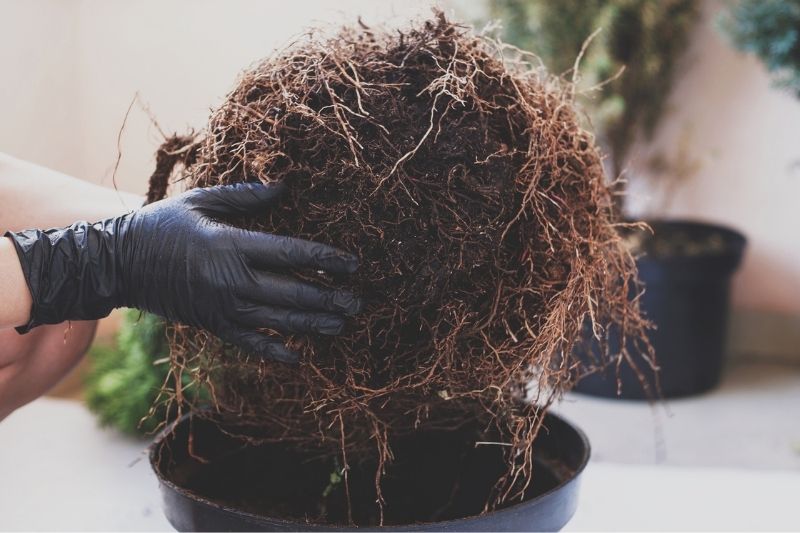
- Using pruning shears, cut dead or unhealthy roots;
- Remove as much of the old substrate as possible;
- Place plant in the centre of the pot. Top of the root ball should sit about two centimetres below the rim of the pot;
- Fill around the root ball with substrate. Take care to position the collar of the plant level with the surface. It must not be buried.
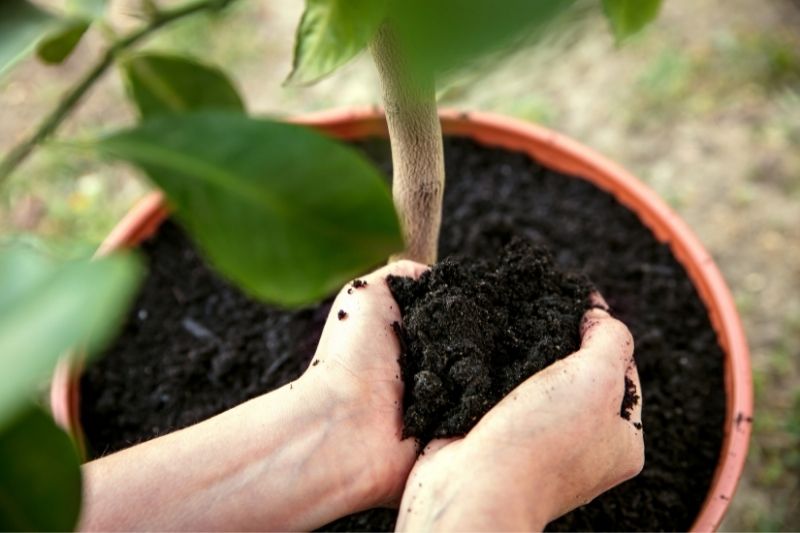
- Firm down the compost with your hands;
- Water thoroughly to expel air pockets;
- Place a saucer under the pot if needed;
- Add mulch around the base of your plant.
4- Care after repotting
- Monitor watering during recovery, avoiding excess moisture. Water sparingly and according to plant needs;
- If your plant is a heavy feeder that requires regular fertiliser, such as roses, wait one month before fertilising.
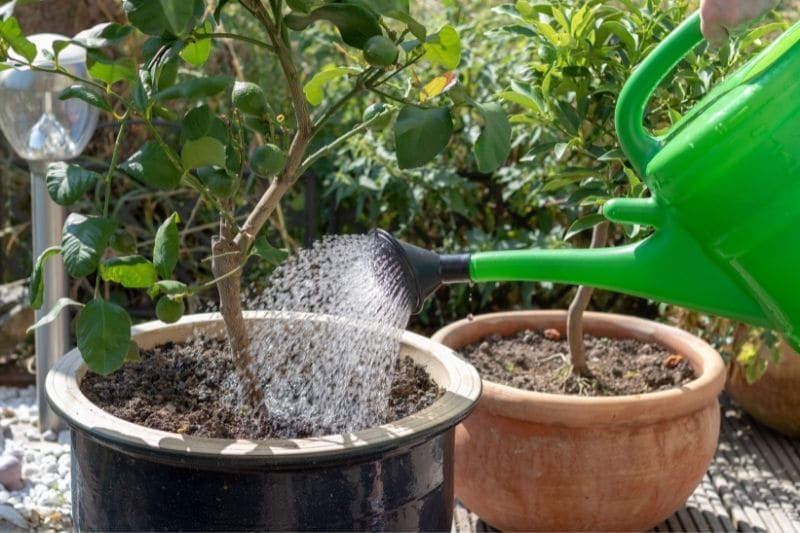
To go further:
- Discover an alternative to repotting: top dressing — what is it? When, how and why to top dress a potted plant.
- Find our advice for transplanting trees, bushes, roses and perennials: when and how?
































Comments